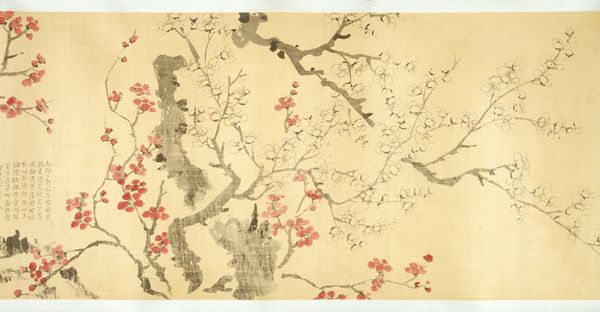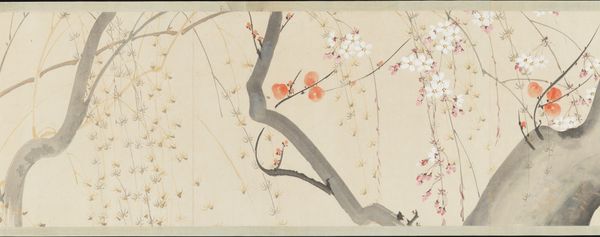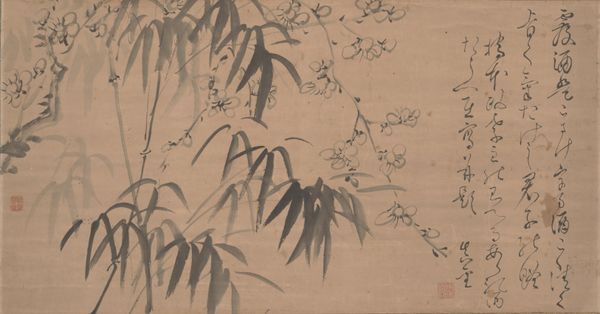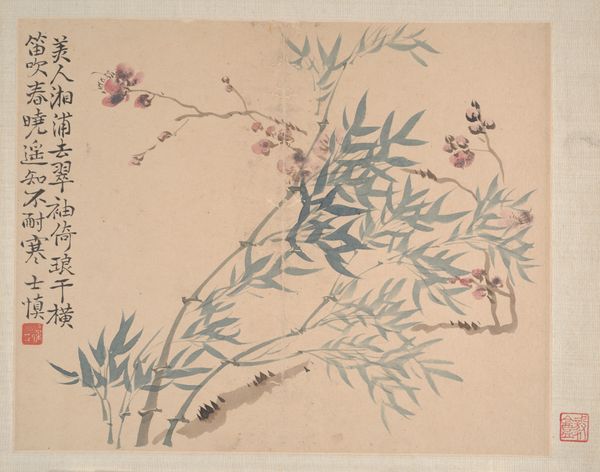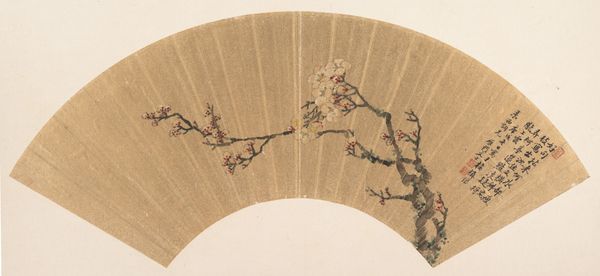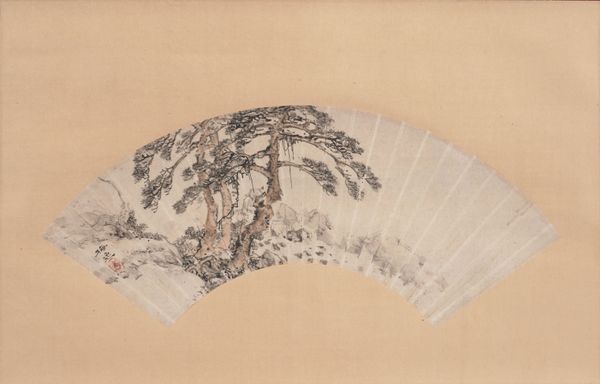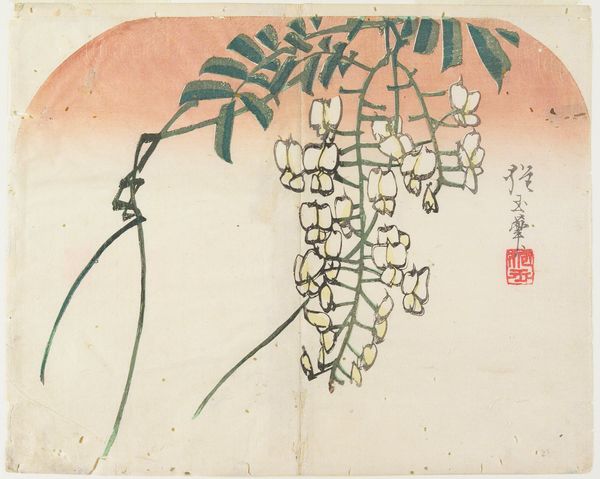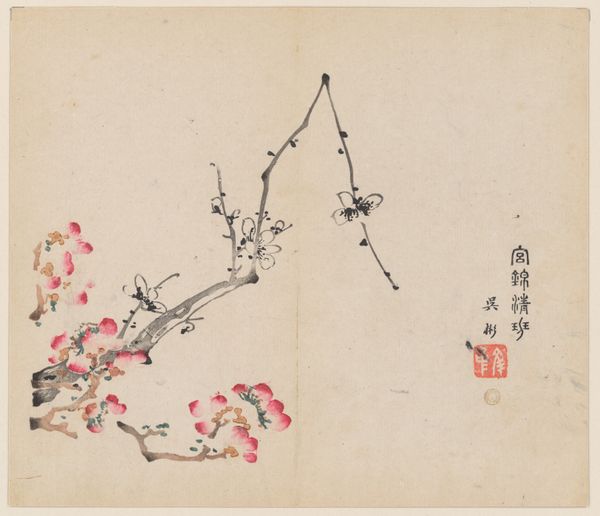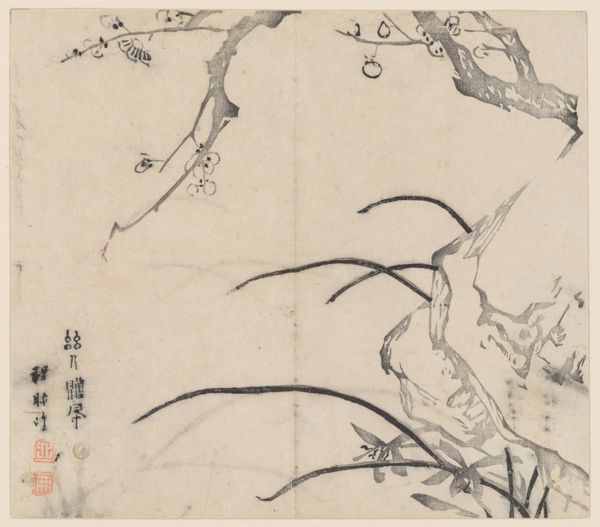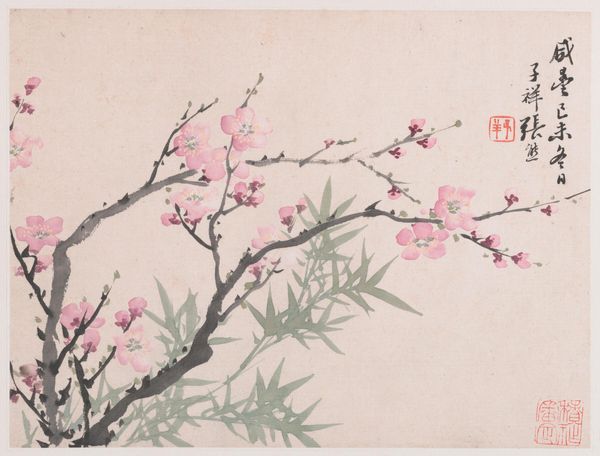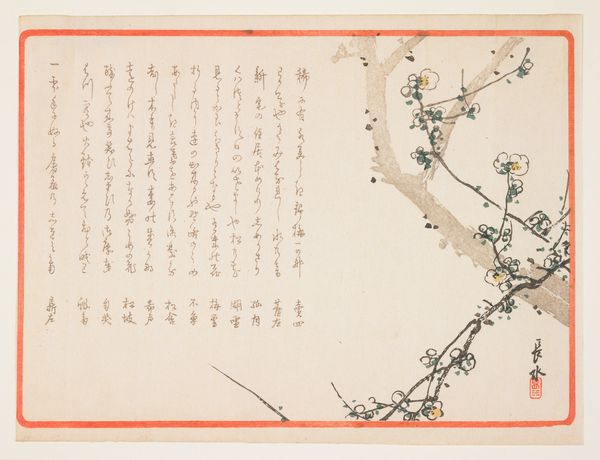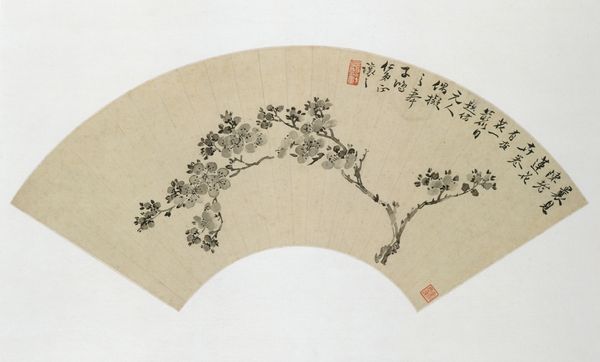
print, ink, color-on-paper
#
abstract painting
#
water colours
# print
#
japan
#
possibly oil pastel
#
handmade artwork painting
#
ink
#
fluid art
#
color-on-paper
#
coffee painting
#
underpainting
#
watercolour bleed
#
watercolour illustration
#
watercolor
Dimensions: 7 1/2 x 19 3/8 in. (19 x 49.2 cm) (image, sheet)
Copyright: Public Domain
Curator: Look at this ink and color-on-paper print called "(Flowering plums in snow)". It's by Yamaoka Geppō and dates roughly between 1818 and 1829. You can see it here at the Minneapolis Institute of Art. Editor: It's beautiful, really. The sparseness…it feels so calm and reflective. There’s a quiet power in that constrained palette and delicate application of ink and color. It almost feels like a sigh in pictorial form. Curator: Indeed. You have to remember this piece wouldn’t have been accessible to the masses at the time; prints such as these served a purpose as luxury items and were primarily consumed among upper-class citizens, acting as displays of culture and artistic engagement. The labor was intense and the result of expertise. Editor: That contrast interests me – between the seemingly simple scene depicted, fragile and vulnerable looking, and the intense work that produced it, plus that position in the social hierarchy. Plum blossoms in the snow, even today, carry a potent symbolic weight in East Asian cultures – they represent perseverance, hope in the face of adversity, and the beauty of transience. Curator: Precisely. Geppō’s printmaking reflects the ongoing circulation of artistic influence; how process affects social status and interpretation. Even the availability of the materials impacted this work. Think of the paper itself – its production, trade, and role as a cultural commodity. Editor: Yes, this is what makes it interesting. Think about what the flowering plum symbolizes as positioned within a context of both cultural importance and inaccessibility; that it then still finds a place today, a visual articulation of a tension between elite society and ordinary hope, still speaking softly across generations and borders. Curator: Considering how ink and color-on-paper are perceived and commodified now compared to Geppō's time certainly adds layers. Editor: Absolutely, especially when contemplating broader questions about visibility and what it means to create a work speaking to hope when so few in society actually had access to it, and what access even means. It all speaks to cultural shifts. Curator: Well, I’ve enjoyed considering the material history that helped bring forth that spark of hope you initially noticed. Editor: As have I – placing Geppō's intimate scene within wider social realities helps highlight enduring qualities.
Comments
minneapolisinstituteofart about 2 years ago
⋮
Flowering plum is the quintessential image of early spring in Japan. While cherry blossoms represent the height of spring, plum flowers are the harbinger of the long-waited season since its flowers open even before the leaves unfurl. Yamaoka Geppø, a painter and haiku poet, captured the beauty of the seasonal transition with the eyes of a poet. As if reflecting upon his own eagerness for spring, he depicted the flowering plum covered by snow, suggesting the earliest blossoms when snow still might fall. The stark contrast between the red flowers and the white snow, a color combination traditionally used for celebrations, evokes a sense of happiness. Shiny white pigments known as gofun, flecked onto the print's surface faintly obscure the tips of some branches adding a subdued brightness to the scene.
Join the conversation
Join millions of artists and users on Artera today and experience the ultimate creative platform.
